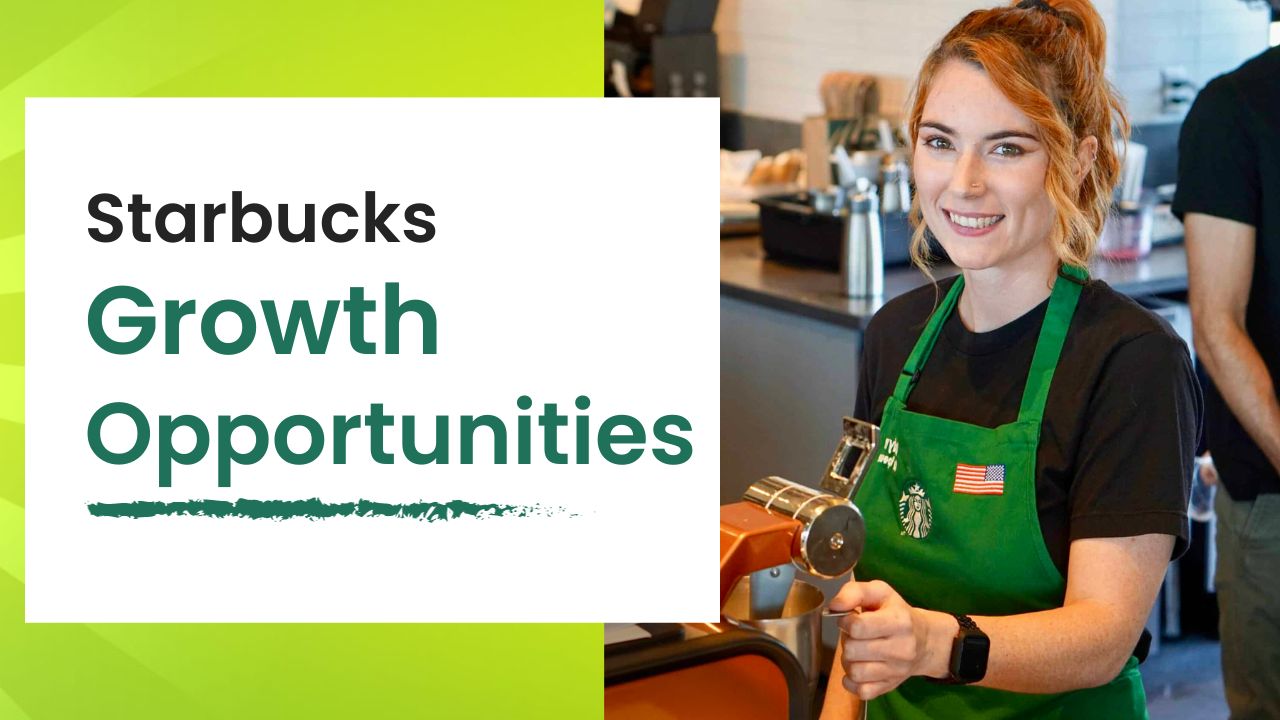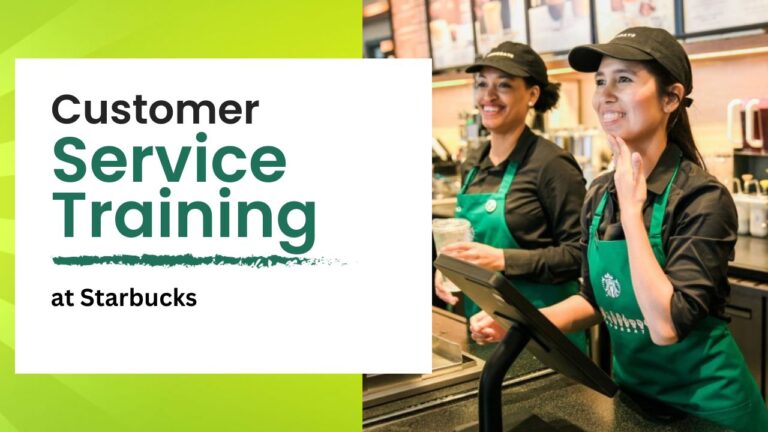Opportunities for Growth at Starbucks

Starbucks, a global coffee giant, offers more than just a job; it presents a pathway for personal and professional growth. Recognizing the importance of career advancement, Starbucks has developed opportunities for Growth and a comprehensive system to help employees, known as partners, climb the corporate ladder. From baristas to management positions, the opportunities are vast and varied. The company invests in Starbucks partner hours dedicated to training and development, ensuring that every partner has the chance to grow. This commitment to employee growth not only benefits the individuals but also contributes to the overall success of Starbucks.
Understanding Starbucks’ Career Pathways
At Starbucks, career pathways are clearly defined and accessible to all employees. The journey from an entry-level position to a leadership role is supported by structured training programs and mentorship. My partner hours at Starbucks are designed to help employees develop the skills needed for their desired career path. This approach ensures that everyone has the opportunity to advance and succeed within the company. Starbucks’ focus on clear career pathways demonstrates its commitment to the professional development of its partners.
The Philosophy Behind Employee Growth and Development
Starbucks believes that investing in employee growth and development is key to its success. This philosophy is rooted in the understanding that when employees grow, the company grows. Training programs are not just about job skills; they also focus on leadership, communication, and teamwork. By encouraging employees to check their Starbucks gift card balance, Starbucks metaphorically emphasizes the value of accumulating skills and experiences. This holistic approach to employee development is what makes Starbucks a leader not only in coffee but in corporate culture as well.
Continuous Learning and Development
At Starbucks, continuous learning and development are more than just corporate buzzwords; they are the pillars of the company’s enduring success. Recognizing the dynamic nature of the coffee industry and customer service, Starbucks invests significantly in ongoing training programs for its employees, including Starbucks’ Management Training Programs and Starbucks’ Environmental Awareness Training. These programs are designed not just to keep pace with evolving industry standards but to lead them. Employees are encouraged to constantly upgrade their skills and knowledge, fostering an environment of perpetual growth. This focus on continuous development ensures that Starbucks employees are not just proficient in their current roles, but are also prepared for future challenges and opportunities.
Upgrading Skills and Knowledge
The commitment to upgrading skills and knowledge at Starbucks is integral to maintaining its renowned service standards, encompassing Customer Service Training at Starbucks and Training on Starbucks’ Digital Tools and Platforms. This ongoing process involves various facets of training, ranging from coffee expertise to customer interaction techniques. The company’s approach to learning is holistic, ensuring that employees have a well-rounded understanding of both the product they serve and the customers they serve it to. By continually enhancing their employees’ skills and knowledge, Starbucks reinforces its position as a leader in customer service.
Ongoing Training Sessions
Starbucks’ ongoing training sessions are a testament to their commitment to employee development. These sessions cover a broad spectrum of topics, from the latest coffee brewing techniques to emerging trends in customer service. The goal is to keep the team up-to-date and ready to deliver the high-quality service Starbucks is known for. This continuous learning approach is key to maintaining the brand’s reputation for excellence.
Learning from Feedback and Experiences
At Starbucks, learning from feedback and experiences forms a crucial part of the training process. Employees are encouraged to reflect on customer interactions and feedback, using these insights to improve their service. This practice ensures that learning is not just theoretical but grounded in real-world experiences. It’s a cycle of constant improvement, driven by on-the-ground insights and customer feedback.
Leadership and Management Training
Leadership and management training at Starbucks go beyond conventional methods. Understanding that leaders are not just born but can be made, Starbucks dedicates resources to nurturing the leadership potential within its ranks. This training covers various aspects of management, including team dynamics, conflict resolution, and strategic planning. The focus is not just on managing a team but on leading it with vision and empathy.
Fostering Teamwork and Collaboration
A significant part of Starbucks’ leadership and management training is fostering teamwork and collaboration. Managers and supervisors are trained to cultivate a positive, collaborative environment within their teams. This training ensures that each team member feels valued and motivated, leading to better service delivery and a more pleasant work atmosphere.
Developing Future Leaders
Developing future leaders is a strategic focus at Starbucks. The company recognizes that today’s baristas are tomorrow’s managers and executives. Through comprehensive training and mentorship programs, Starbucks nurtures the leadership potential of its employees, preparing them for advanced roles within the company. This investment in future leaders not only benefits the individuals but also ensures the long-term success of the company.
Read Related Posts:
The Impact of Effective Training on Customer Satisfaction
Measuring Customer Service Success
Measuring customer service success at Starbucks is a multifaceted process. It involves not just tracking sales and revenue but also gauging customer satisfaction and loyalty. The company employs various tools and metrics to assess the effectiveness of its customer service, from customer feedback surveys to mystery shopper reports. This data-driven approach enables Starbucks to fine-tune its service delivery, ensuring that it consistently meets, if not exceeds, customer expectations.
Feedback Mechanisms and Improvement Strategies
Feedback mechanisms play a crucial role in Starbucks’ strategy to measure and improve customer service. The company actively seeks feedback from customers through various channels, including in-store surveys, online platforms, and direct customer interactions. This feedback is then analyzed and used to develop targeted improvement strategies, ensuring that the service keeps evolving to meet customer needs.
The Role of Customer Feedback in Training Enhancement
Customer feedback is integral to enhancing Starbucks’ training programs. The insights gained from customer interactions are used to identify areas for improvement and to update training modules. This ensures that the training is always relevant and effective, directly addressing the needs and expectations of customers. The use of customer feedback in training enhancement exemplifies Starbucks’ commitment to a customer-centric approach in all aspects of its operations.
Leadership and Upper Management Paths
Starbucks, a leader in the coffee industry, also leads in offering extensive career advancement opportunities, especially in leadership and upper management, which include Starbucks’ Coffee Knowledge Workshops and Mastering the Art of Espresso Presentation. These paths are not just about climbing the corporate ladder but also about personal and professional development. Starbucks has designed a career trajectory that starts from entry-level positions and extends to executive roles, focusing on nurturing leadership qualities and responsibilities. Additionally, The company’s emphasis on internal growth provides employees with clear and attainable paths to managerial and executive positions. Starbucks’ leadership and upper management paths reflect its commitment to employee development and organizational success.
Climbing to Managerial Positions
Advancing to managerial positions at Starbucks is a journey of skill development and leadership. The company has a structured approach to grooming employees for managerial roles, focusing on hands-on experience, mentoring, and training. The path to management at Starbucks is transparent and accessible, encouraging employees to aspire and work towards these roles. Managerial positions at Starbucks are not just job titles; they symbolize the company’s trust in its employees’ abilities and potential.
Store Manager and District Manager Roles
- Store Manager: Responsible for the overall operations of a Starbucks store, including staff management, customer service, and financial performance.
- District Manager: Oversees multiple Starbucks stores, ensuring consistency in quality and service across their district.
- Developing Business Strategies: Store and District Managers play a key role in developing and implementing business strategies to enhance store performance.
- Team Leadership and Development: These roles involve leading and developing teams, fostering a positive work environment, and promoting Starbucks’ culture and values.
Leadership Qualities and Responsibilities
- Strong Communication Skills: Essential for effective team management and customer relations.
- Decision Making: Ability to make strategic decisions that benefit the store and the company.
- Problem Solving: Tackling challenges head-on and finding innovative solutions.
- Inspiring Teamwork: Creating a collaborative environment where every team member feels valued and motivated.
Executive Opportunities and Corporate Roles
Starbucks offers a range of executive opportunities and corporate roles for those aspiring to reach the highest echelons of the company. These positions require a combination of experience, leadership skills, and a deep understanding of the company’s values and business model. Transitioning to these roles involves strategic career planning and taking advantage of the various growth opportunities that Starbucks offers. Furthermore, The journey to executive roles is marked by continuous learning, adaptability, and a commitment to the company’s vision.
Transitioning to Corporate Positions
- Building a Broad Skill Set: Gaining experience in different areas of the business to prepare for corporate roles.
- Understanding the Bigger Picture: Developing an understanding of Starbucks’ global operations and corporate strategies.
- Networking and Mentorship: Utilizing connections and mentorship opportunities within the company to facilitate the transition.
- Demonstrating Leadership Potential: Exhibiting the qualities and capabilities necessary for high-level corporate responsibilities.
Strategies for Long-Term Career Growth
- Continuous Learning and Education: Pursuing ongoing education and training to stay abreast of industry trends and business management.
- Setting Career Goals: Establishing clear, long-term career goals and creating a roadmap to achieve them.
- Embracing New Challenges: Taking on new responsibilities and projects to broaden experience and visibility within the company.
- Staying Aligned with Company Values: Ensuring personal career goals are aligned with Starbucks’ values and mission.
Personal and Professional Development at Starbucks
Starbucks is renowned for fostering an environment of personal and professional development among its employees. The company understands that its success is tied to the growth and satisfaction of its team members. To support this, Starbucks offers a variety of educational opportunities, mentoring programs, and networking platforms. These initiatives are designed not just to improve employees’ current job performance but also to prepare them for future roles within the company. Starbucks’ commitment to development has made it a leader in employee satisfaction and retention.
Educational Opportunities
Starbucks places a high emphasis on educational opportunities as a part of its commitment to employee growth. These opportunities are varied and cater to different career aspirations and life stages of its employees. They range from higher education programs to specialized certifications, reflecting Starbucks’ understanding that education is key to personal and professional advancement.
Starbucks College Achievement Plan
The Starbucks College Achievement Plan is a landmark initiative offering eligible U.S. employees full tuition coverage for a first-time bachelor’s degree through Arizona State University’s online program. This plan demonstrates Starbucks’ investment in its employees’ futures, going beyond the workplace to support their overall life goals. The program has been widely recognized for its innovation in employee benefits and corporate responsibility.
External Education and Certifications
Additionally, Starbucks encourages and supports its employees in pursuing external education and certifications. This support includes financial assistance and flexible scheduling to accommodate educational pursuits. Starbucks understands that a well-rounded education and diverse certifications can bring new perspectives and skills to the workplace, benefiting both the employees and the company.
Mentoring and Networking within Starbucks
Mentoring and networking are key components of Starbucks’ strategy for fostering a culture of growth and development. The company has structured programs to help employees connect, learn, and grow within the Starbucks family. These programs not only enhance job skills but also build a strong community within the company.
Internal Mentorship Programs
Starbucks’ internal mentorship programs pair employees with experienced mentors within the company. These mentors provide guidance, support, and insight into career progression within Starbucks. The program is designed to help employees navigate their career paths, offering a personalized approach to professional development.
Building Professional Networks for Growth
Building professional networks is a focus area for Starbucks’ employee development programs. Employees are encouraged to connect with colleagues, managers, and industry professionals. These networks provide opportunities for collaboration, innovation, and career advancement, reinforcing the importance of community and connection in career growth.
Performance Reviews and Career Pathing
Regular performance reviews and career pathing are integral to Starbucks’ approach to employee development. These processes help employees understand their strengths, identify areas for improvement, and align their career goals with company opportunities. Starbucks’ performance reviews are not just evaluations but constructive dialogues that guide career development.
Setting Goals and Tracking Progress
In performance reviews, setting goals and tracking progress are crucial components. Employees work with their managers to set realistic, achievable goals aligned with their career aspirations and Starbucks’ objectives. Progress tracking is an ongoing process, ensuring that employees stay on track and receive the necessary support to achieve their goals.
Utilizing Feedback for Career Development
Feedback is a key tool in Starbucks’ approach to career development. Employees are encouraged to seek and utilize feedback from managers, mentors, and peers to improve their performance and advance their careers. This feedback is not just about identifying areas for improvement but also about recognizing achievements and potential.
Embracing Challenges and Opportunities
Overcoming Obstacles in Career Growth
Challenges and obstacles are an inevitable part of any career journey. Starbucks trains its employees to view these challenges as opportunities for learning and growth. The company provides support and resources to help employees overcome these obstacles, turning potential setbacks into stepping stones for career advancement.
Leveraging Opportunities for Advancement
Furthermore, Starbucks creates an environment where employees are encouraged to leverage opportunities for advancement. Whether it’s taking on new responsibilities, participating in special projects, or applying for promotions, Starbucks supports its employees in their pursuit of growth. This proactive approach to career advancement is a key factor in Starbucks’ high employee satisfaction and retention rates.
Success Stories and Testimonials
The success stories of Starbucks employees serve as a testament to the effectiveness of its training and development programs. These stories highlight the diverse paths and opportunities available within the company. From personal achievements to professional milestones, these testimonials inspire and motivate current and future employees.
From Barista to Boardroom
Many Starbucks success stories feature journeys from entry-level positions to leadership roles. These stories exemplify the company’s commitment to internal growth and the potential for career advancement within Starbucks. They serve as powerful examples of how dedication, hard work, and taking advantage of Starbucks’ development opportunities can lead to remarkable career trajectories.
Success Through Continuous Learning
Continuous learning is a common theme in the success stories of Starbucks employees. These stories often highlight how ongoing education, whether formal or through Starbucks’ internal programs, has played a crucial role in their career advancement. The emphasis on learning and development within Starbucks not only benefits the individual employees but also contributes to the company’s overall success and innovation.
Conclusion
In conclusion, Starbucks offers a robust pathway for employees to climb the corporate ladder, from entry-level positions to executive roles. The company’s focus on comprehensive training, mentorship, and continuous learning creates an environment conducive to professional growth and development. Opportunities at Starbucks are not limited to store management but extend to corporate roles, emphasizing the value of ambition and hard work. Furthermore, Starbucks’ dedication to nurturing its employees’ careers reflects its commitment to their personal and professional success. Ultimately, Starbucks stands as a model for how companies can foster a culture of growth and opportunity for their employees.






